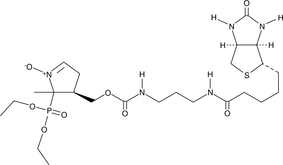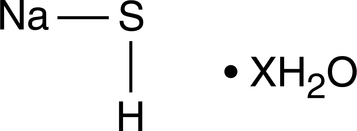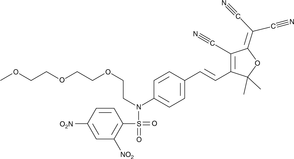Reactive Sulfur Species
Products for Reactive Sulfur Species
- Cat.No. Product Name Information
-
GC45707
7-Azido-4-methylcoumarin
A fluorescent H2S probe

-
GC49312
7-Fluoro-2,1,3-benzoxadiazole-4-sulfonate (ammonium salt)
7-Fluoro-2,1,3-benzoxadiazole-4-sulfonate (ammonium salt) is a fluorescent label.

-
GC42742
ADT-OH
ADT-OH is a derivative of anethole dithiolethione (ADT) and synthetic hydrogen sulfide (H2S) donor.

-
GC42821
AP219
AP39 is a compound used to increase the levels of hydrogen sulfide (H2S) within mitochondria.

-
GC42823
AP39
AP39 is a compound used to increase the levels of hydrogen sulfide (H2S) within mitochondria.

-
GC41583
BCN-E-BCN
BCN-E-BCN is a strained cycloalkyne probe for detecting proteins that have been sulfenylated, the first intermediate step in protein oxidation.

-
GC41397
BMPO
BMPO is a cyclic nitrone spin trap agent, it is a water-soluble white solid which makes BMPO purification easier than other spin trap agents.

-
GC43205
CAY10731
CAY10731 is a fluorescent probe for hydrogen sulfide (H2S).

-
GC41445
DAz-1
Redox-sensitive cysteine residues in proteins may function as sensors of reactive oxygen species (ROS) and also serve as molecular switches, activating or deactivating proteins, following a change in oxidation state.

-
GC43382
DAz-2
DAz-2 is a cell-permeable chemical probe used to detect cysteine oxidation in proteins.

-
GC45940
DCP-Rho1
A fluorescent probe for sulfenic acid-containing proteins

-
GC43411
DEPMPO-biotin
DEPMPO is a nitrone that is used to spin trap reactive O-, N-, S-, and C-centered radicals and allow their characterization when used in association with electron spin resonance.

-
GC47222
Difluorinated H2S Fluorescent Probe 1
A fluorescent probe for H2S

-
GC43492
DL-Propargyl Glycine (hydrochloride)
Hydrogen sulphide (H2S), a naturally occurring gasotransmitter, is a potent vasodilator and pro-inflammatory mediator.

-
GC43581
DYn-2
Mild oxidation can convert the sulfhydryl group of cysteine residues on proteins to cysteine-sulfenic acid derivatives (Cys-SOH).

-
GC41630
H2S Donor 5a
H2S (Hydrogen sulfide) Donor 5a, as a stable, cysteine activated hydrogen sulfide donor, can react with reducing agents containing sulfhydryl groups such as cysteine and reduced glutathione to release H2S.

-
GC43887
IBTP (iodide)
IBTP is a lipophilic cation that is accumulated in mitochondria and forms stable thioether adducts in a thiol-specific manner.

-
GC44198
MitoA
MitoA is a ratiometric mass spectrometry probe that can be used for assessing changes in H2S within mitochondria in vivo.

-
GC44602
Peroxynitrite
Formed in vivo by the reaction of NO with superoxide

-
GC41219
S-Phenylsulfonylcysteine
S-Nitrosylation reactions regulate protein function and mediate nitrosative stress.

-
GC44910
Sodium Hydrogen Sulfide (hydrate)
Hydrogen sulfide (H2S) is, like nitric oxide, an important gaseous mediator that has significant effects on the immunological, neurological, cardiovascular and pulmonary systems of mammals.

-
GC45041
ThioFluor 623
The rapid, selective, and sensitive sensing of thiols is important in diverse areas of research.

-
GC48168
ThioGlo1
A thiol-reactive fluorescent probe

-
GC45162
WSP-5
WSP-5 is a fluorescent probe designed for the rapid detection of hydrogen sulfide (H2S) in biological samples and cells. λ ex/em =502/525 nm.



